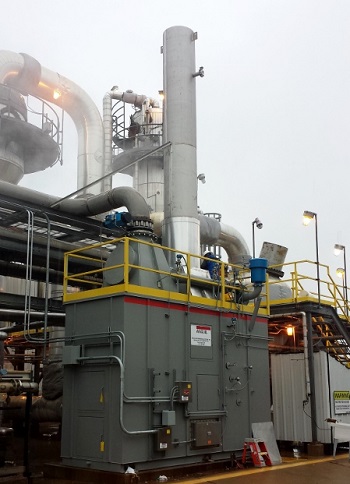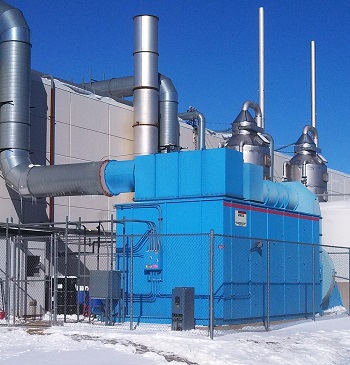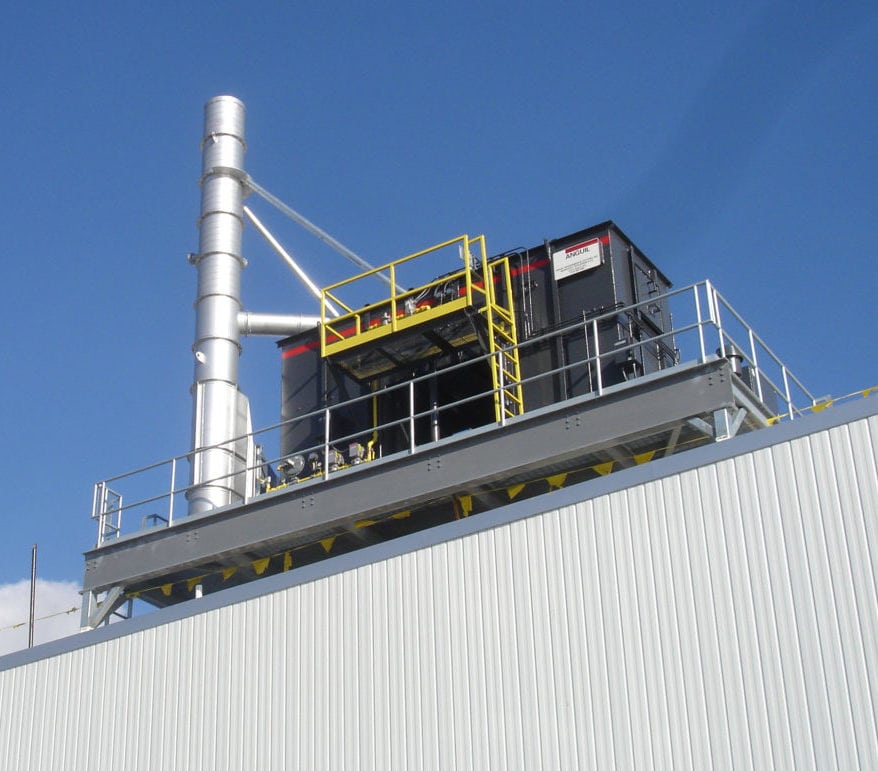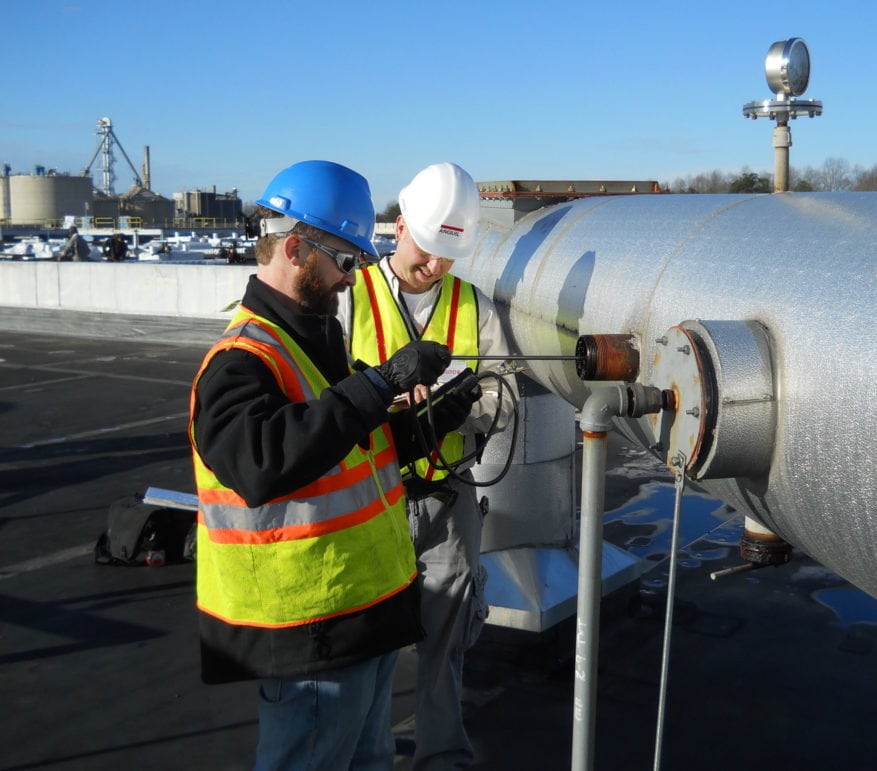This website uses cookies so that we can provide you with the best user experience possible. Cookie information is stored in your browser and performs functions such as recognising you when you return to our website and helping our team to understand which sections of the website you find most interesting and useful.
 The Anguil Catalytic Recuperative Oxidizer destroys Hazardous Air Pollutants (HAPs), Volatile Organic Compounds (VOCs) and odorous emissions at significantly lower temperatures than thermal oxidation technologies through the use of catalyst.
The Anguil Catalytic Recuperative Oxidizer destroys Hazardous Air Pollutants (HAPs), Volatile Organic Compounds (VOCs) and odorous emissions at significantly lower temperatures than thermal oxidation technologies through the use of catalyst.
Lowering the oxidation temperature to between 350°F (177°C) and 850°F (454°C) offers many benefits:
- Decreased fuel usage
- Lower cost of construction materials
- Reduced thermal cycling
- Fewer Greenhouse Gas (GHGs) emissions; Carbon Monoxide (CO), Nitrogen Oxide (NOx)
- Smaller equipment footprint
-
Product Overview
Benefits of Anguil’s CATOX
- Capable of 99.9% destruction efficiency
- Multiple catalyst options for optimized performance on a wide variety of applications
- Internal heat recovery options to further reduce energy consumption
- Compact, lightweight system perfect for indoor or roof installations
-
Air Flow Range & Efficiency
Air Flow Range
- 100-100,000 SCFM (160.5-160,500 Nm3/hr) (Single System)
Catalyst Options
- Base or precious metal catalysts for high performance and longevity
Destruction & Removal Efficiency
- 99.9%
-
Ideal Applications
Ideal Applications
- Batch processes
- Low process volume
- High emission concentrations
- Weight limitations
- Fully characterized process streams with no catalyst poisons or masking agents
- Sterilization processes
DESIGN FEATURES AND DESIGN OPTIONS
Features
- Oxidizer design compliant with NFPA 86 and FM Global
- Shop assembled, pre-wired and tested prior to shipment
- Reactor has a fully-welded, leak-tested, 304L or 316L stainless steel interior with high density insulation and painted weatherproof enclosure
- A multiple pass, stainless-steel, shell and tube or plate-type primary heat exchanger
- Modulating burner options include electric heating elements or multiple gas fuel inputs (natural gas, propane, hydrogen)
- Burner designed to maintain temperature during full flow, no process conditions
- Variable Frequency Drive (VFD) allows for high volumetric turn-down during idle or low process conditions
- Hinged access doors for ease of maintenance
- Gas trains are designed to any international certifications such as CSA, TSSA, CGA, EN and ATEX
 Options
Options
- Alternate fuel options including electrically heated and hydrogen burners for lower carbon footprint solutions
- Multiple catalyst options including pelletized or monolith, precious or base metals and sulfur-resistant
- Forced or induced draft fan arrangements
- Skid or remote mounted panels available for system controls
- Custom oxidizer design options available
- Low NOX burners available
- Acid gas scrubber module with a completely integrated control system
- Secondary heat and energy recovery systems for waste heat utilization
- Peak shavers for keeping incoming pollutants at safe concentrations
- Selective Catalytic Reduction (SCR) systems reduce Nitrous Oxides (NOx) from industrial or manufacturing processes. We achieve NOx reduction through the injection of a liquid reductant (ammonia or urea) and the aid of emission catalyst. Once properly mixed and heated, the exhaust is directed through the catalyst chamber which reduces the NOx to elemental Nitrogen (N2). Through proper reductant selection and oxidizer design, upwards of 98% of exhaust gases are treated prior to being released to the atmosphere.
HOW DOES THE CATOX WORK?
VOC and HAP laden process gas is either pushed or pulled into a metal heat exchanger inside the oxidizer via a system fan. The contaminated airstream is progressively heated while traveling through the heat exchanger towards the combustion chamber. The heat exchanger allows for self-sustaining operation with no auxiliary fuel usage at Lower Explosive Limits (LEL) levels of 8-12%. At the burner or electric heater, the process gas is raised to the catalyst operating temperature. As the heated gas passes through the catalyst, an exothermic (heat releasing) reaction takes place as the pollutants are converted to carbon dioxide and water vapor. The hot, purified then air passes through the opposite side of the heat exchanger and transfers thermal energy via the heat exchanger to preheat the incoming air. Finally, the cooler, purified air is exhausted to the atmosphere through the system stack.
Operating Cost Reduction Strategies
- Primary or secondary heat and energy recovery solutions
- Recirculation Systems
- Oxidizer Service and Preventive Maintenance Evaluations (PME)








